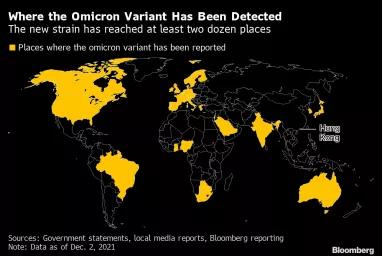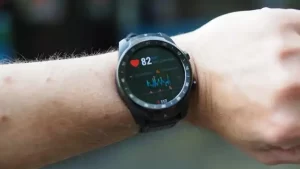Omicron R value may be greater than Delta and current vaccines ineffective
- Statins Lower Blood Lipids: How Long is a Course?
- Warning: Smartwatch Blood Sugar Measurement Deemed Dangerous
- Mifepristone: A Safe and Effective Abortion Option Amidst Controversy
- Asbestos Detected in Buildings Damaged in Ukraine: Analyzed by Japanese Company
- New Ocrevus Subcutaneous Injection Therapy Shows Promising Results in Multiple Sclerosis Treatmen
- Dutch Man Infected with COVID-19 for 613 Days Dies: Accumulating Over 50 Virus Mutations
Omicron R value may be greater than Delta and current vaccines ineffective
- Red Yeast Rice Scare Grips Japan: Over 114 Hospitalized and 5 Deaths
- Long COVID Brain Fog: Blood-Brain Barrier Damage and Persistent Inflammation
- FDA has mandated a top-level black box warning for all marketed CAR-T therapies
- Can people with high blood pressure eat peanuts?
- What is the difference between dopamine and dobutamine?
- How long can the patient live after heart stent surgery?
Omicron R value may be greater than Delta and current vaccines ineffective.
How bad is the Omicron mutant strain? Its R value may be greater than Delta, and existing vaccines are not effective
Guide
At present, researchers around the world are fully understanding the Omicron strain to understand its infectious power, pathogenicity and immune escape ability. On December 4, the World Health Organization stated that there have been cases of Omicron infection in 38 countries around the world. As more and more people are detected, the latest developments in its research have attracted more and more attention from the public.
Compared with the previous new coronavirus mutants, whether the Omicron strain will cause severe illness and the effectiveness of the vaccine are all issues of great concern to the public. Recently, “Nature” magazine interviewed many scientists around the world, summarizing our understanding of the Omicron mutant so far.
01. The COVID-19 mutant Omicron has a higher R value than the Delta strain?
The new strain of Omicron has spread rapidly in South Africa, with most of the growth occurring in Gauteng province, where Johannesburg is located. On December 1, South Africa recorded 8561 cases, which is higher than the 3402 cases reported on November 26 and hundreds of cases per day in mid-November.

Countries and regions where Omicron mutants have been detected
Epidemiologists use R (the average number of new cases spread by each infection) to measure the growth of an epidemic. In September, the R value of Gauteng was well below 1. But in late November, thought to be in the early stages of the pandemic, the South African National Institute of Infectious Diseases (NICD) determined that the R value in Gauteng was higher than 2.
Belgian KU-Leuven evolutionary biologist Tom Wenseleers said that the case of the main mutant Delta checked at the time was declining, indicating that the Omicron strain that has begun to spread may spread much faster than Delta.
Based on the increase in COVID-19 cases and sequencing data, Wenseleers estimates that Omicron can infect 3 to 6 times as many people as Delta in the same period.
In order to better understand the spread of Omicron, researchers will observe the spread of this variant in South Africa and global spread, which may cause researchers to overestimate the rapid growth of Omicron, but if the spread mode can be verified in other countries, then It is very strong evidence, which shows that Omicron is highly contagious.
According to this report in Nature, Christian Althaus, a computational epidemiologist at the University of Bern, Switzerland, revealed that “if similar transmission patterns are not staged in other countries, it means that the transmission is complicated and strongly dependent on the immunological situation, so We must wait.”
02. Can the Omicron strain break through the immune barrier of the vaccine?
When Omicron mutants appeared, both Moderna and BioNtech had insufficient information about their mRNA vaccines.
At the same time, they also emphasized that they would strengthen the development of new variants of vaccines.
The rapid rise of Omicron mutants in South Africa suggests that it has the ability to overcome immunity.
Wenseleers said that about a quarter of South Africans have been fully vaccinated, and it is likely that a large part of the population was infected with the new coronavirus in the early wave, but now that the new strain is spreading so quickly, it also highlights the previous The COVID-19 immune barrier established did not play a role.
This is mainly because the S protein of the Omicron strain has as many as 32 mutation sites. Early analysis suggests that the vaccine’s effectiveness against Omicron mutants may be diminished.
In measuring the relationship between Omicron’s immune escape ability and the number of mutations, studies have shown that the mutant will weaken the effectiveness of neutralizing antibodies.
In September 2021, “Nature” published a paper by the Rockefeller University scientific research team.
They designed a highly mutated COVID-19 variant that can mimic the mutation of Omicron and prove that the mutation of S protein is most likely to receive two doses of mRNA vaccine.
Or people who have recovered from the COVID-19 are completely resistant to neutralizing antibodies.
“The extent to which the mutant spreads elsewhere may depend on factors such as vaccination and previous infection rates,” said Aris Katzourakis, an expert on virus evolution at the University of Oxford in the United Kingdom. Control measures, it may also have a spread advantage.
03. How will vaccine research and development institutions respond to Omicron?
If the Omicron mutant can evade neutralizing antibodies, this does not mean that the immune response triggered by vaccination and previous infection will not protect the mutant. Other parts of the immune system, especially T cells, may be less affected by the Omicron mutation than the antibody response.
South African researchers plan to measure the activity of T cells and another type called natural killer cells, which is of great significance for the prevention of severely ill patients with COVID-19 disease.
Previously, there were reports that all three vaccines used in South Africa, Johnson & Johnson, Pfizer-BioNtech, and Oxford-AstraZeneca, had breakthrough infections. Although the vaccine is almost ineffective in mild and moderate cases, it can prevent severe illness.
The same is true for Omicron mutants. We should re-excavate the clinical value of different vaccines to deal with the threat of Omicron mutants.
04. How effective is the vaccine boost against Omicron?
The threat from the Omicron mutant will prompt some developed countries, such as the United Kingdom, to accelerate and expand the launch of COVID-19 vaccine booster shots, but the effectiveness of these additional doses is still unclear.
The third shot can increase the level of neutralizing antibodies, which is likely to enhance the defense against Omicron mutants.
At the same time, a research team’s research on the Omicron mutant S protein found that antibodies from people who received the injection of COVID-19 recovery can still effectively target the S protein mutation.
These results indicate that people who have been repeatedly exposed to the spike protein of the new coronavirus, whether through infection or booster needles, are likely to have neutralizing activity against the Omicron mutant.
05. Will Omicron cause more complicated symptoms?
Early reports link the Omicron mutant strain to mild disease, which may cause people to relax their vigilance against the mutant.
But these reports are usually based on rumors or small amounts of data, which are actually not reliable and may be misleading.
The current virus research data is still being collected, which brings huge challenges to the research progress.
Müge Çevik, an infectious disease expert at the University of St Andrews in the United Kingdom , warned that many complex variables also affect the assessment of the severity of the mutant, especially when the epidemic is only spreading in a local state, such as the mild case of Omicron in South Africa.
The report may be affected by the country’s relatively young demographic structure.
Researchers also need to look for data on Omicron strain infections in other countries, which will allow scientists to better control important factors such as age, vaccination status, and health status.
At the same time, we need to pay attention to the method of data collection, because the number of inpatients may be affected by the overall hospital capacity in a region.
In addition, the degree of local economic poverty is also a crucial factor.
In short, it is not rigorous to comment that the Omicron strain only causes mild illness.
06. Where has Omicron spread, and how can we track it?
As of December 3, there have been cases of Omicron infection of the new coronavirus variant strain in 38 countries around the world, a significant increase from the 23 countries notified two days ago.
Since the current confirmation of Omicron cases requires genome sequencing, it is mainly developed countries that have the ability to quickly sequence viruses from new coronavirus positive samples, which means that early data on Omicron transmission may not be accurate.
Brazil and some other countries have limitations in the monitoring of Omicron case sequencing, and the lack of resources, equipment, and funds has severely hindered Omicron testing in many such developing countries.
At the same time, some local diseases in these countries also require the use of medical resources, which also affects the progress of sequencing.
For example, Bangladesh sequenced about 0.2% of positive coronavirus samples. Researchers are eager to strengthen genome monitoring to monitor Omicron and other new mutants, but resources are limited.
Microbiologist Senjuti Saha said, “Bangladesh is recovering from a large-scale dengue fever epidemic. Although we are all worried about the COVID-19 pneumonia, we cannot ignore our endemic disease.”
She continued to add, “We can only do so much.”
Reference:
https://www.nature.com/articles/d41586-021-03614-z
Omicron R value may be greater than Delta and current vaccines ineffective
(source:internet, reference only)
Disclaimer of medicaltrend.org
Important Note: The information provided is for informational purposes only and should not be considered as medical advice.



